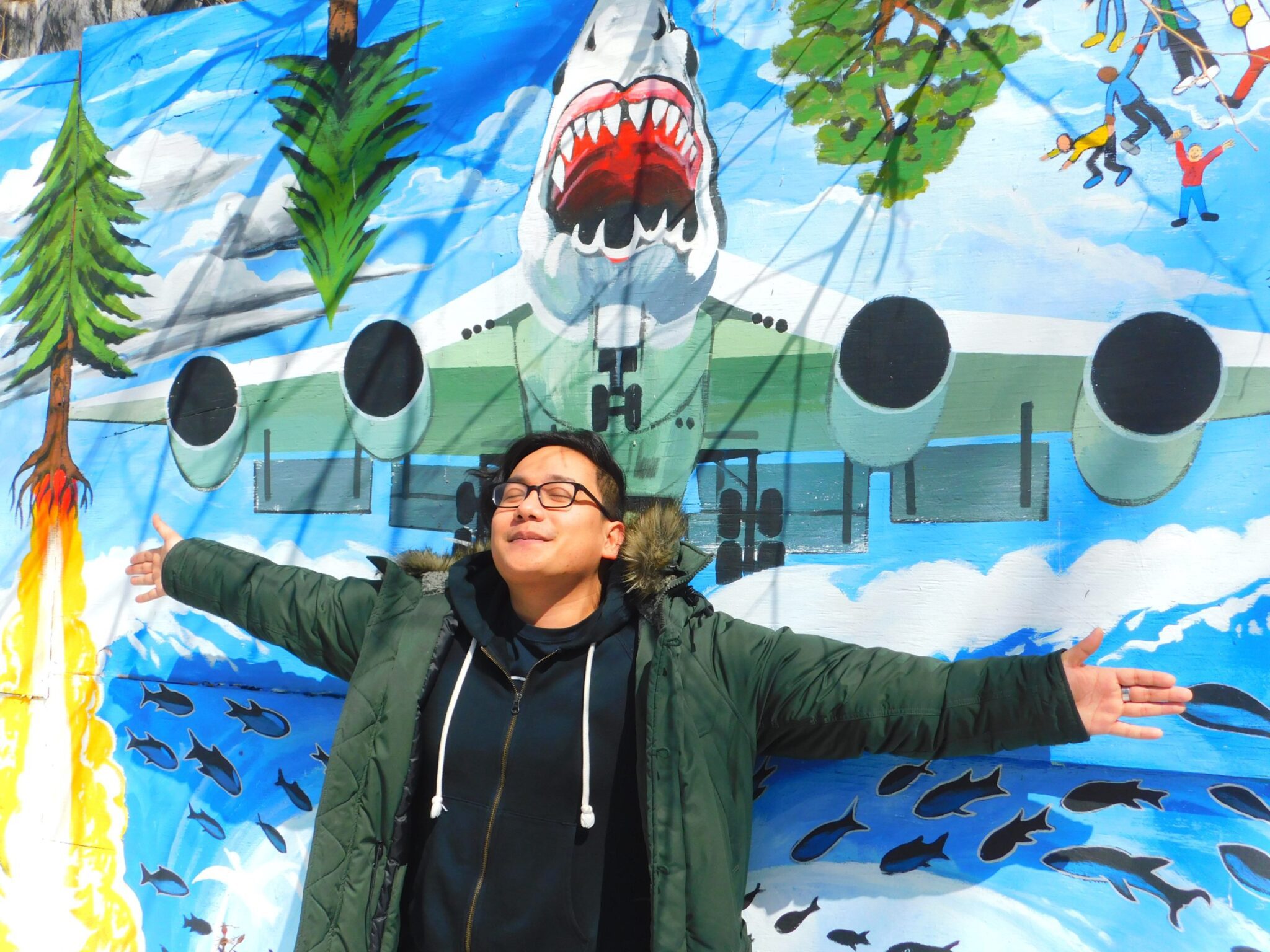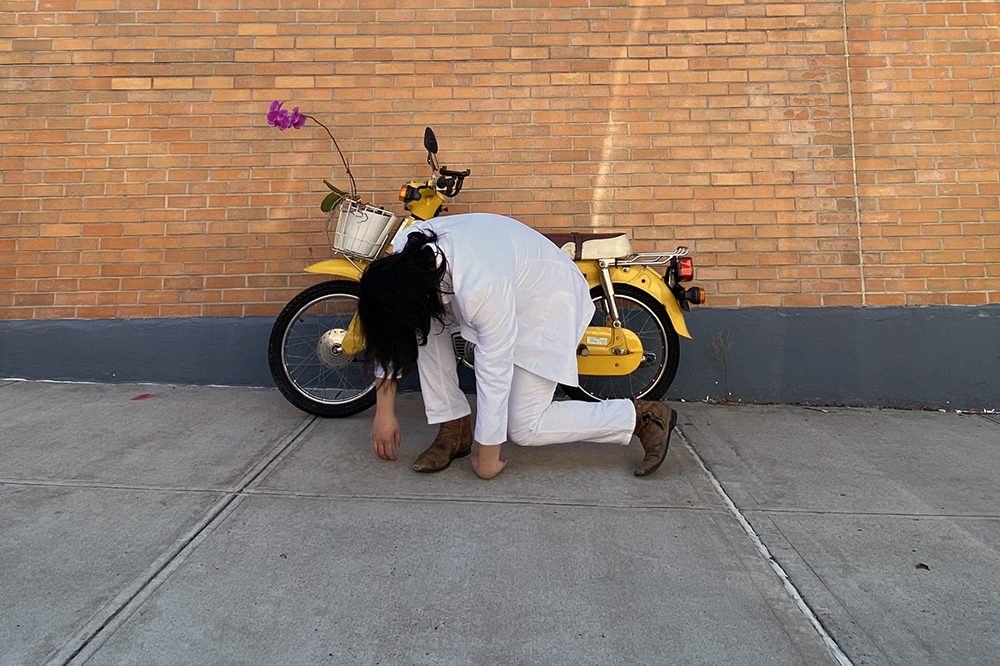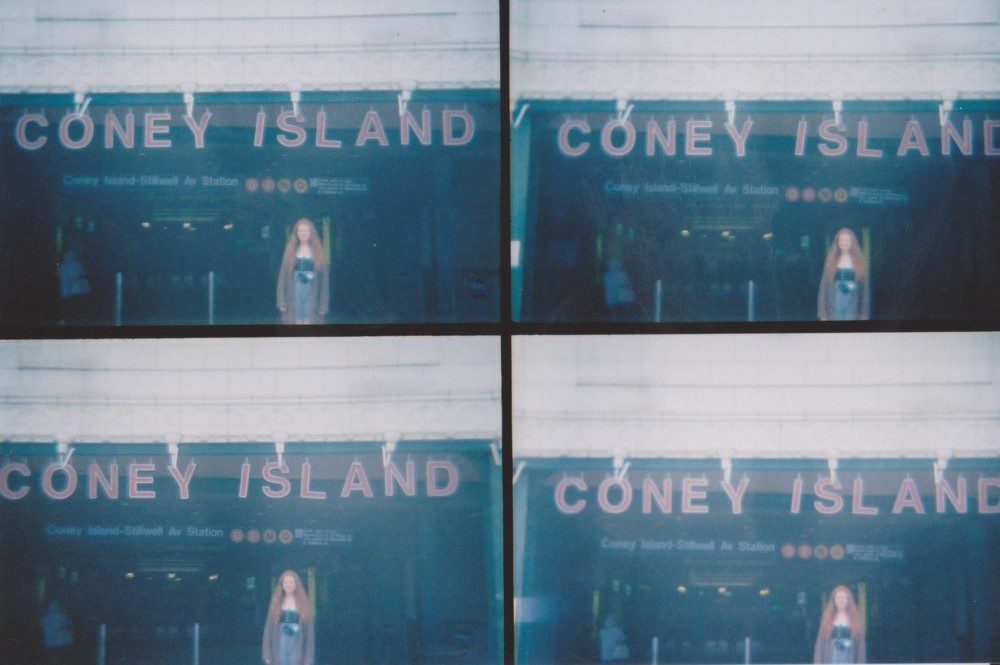
ONLY NOISE explores music fandom with poignant personal essays that examine the ways we’re shaped by our chosen soundtrack. This week, Jennavieve McClelland tours Patti Smith’s New York City in a post-graduate stupor, looking for tangible inspiration from punk’s poet laureate.
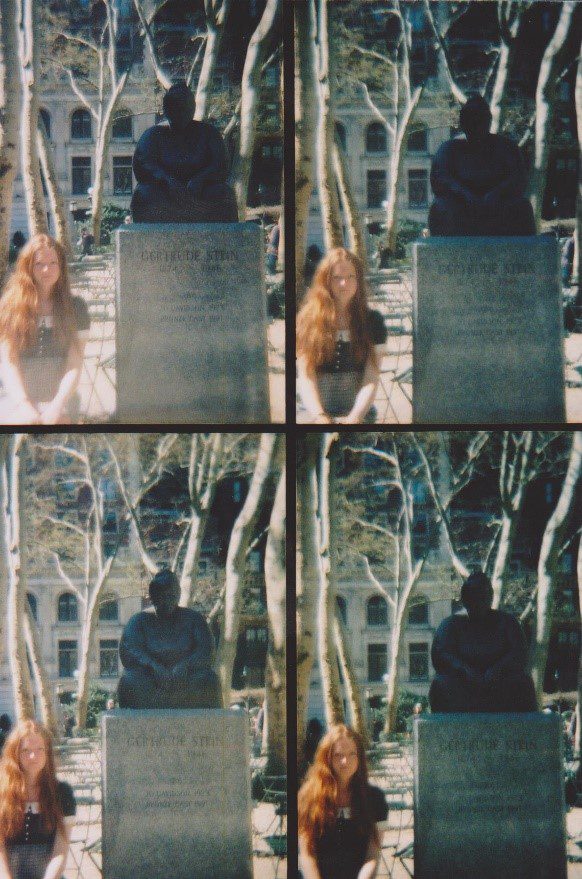
I sought my kind & found none. How you rescued me, your peasant hands reaching through time,
wrapping my young heart, your poems found in the stall by the greyhound station.
Patti Smith, “Une Saison en Enfer”
In Dream of Life, the 2013 documentary that took Patti Smith and Steven Sebring 10 years to shoot, she notes: “I like to feel the skin of a canvas. I know it’s not right to touch paintings. You know, when you go to museums, first time I got yelled at I was a teenager, touching Modigliani. I just had to feel the texture, just the way the paint [trails off, touching her own painting]… It’s like, I almost have to put mittens on.”
Smith moves beyond sight into that which can be felt, feeling for the granular effect of the paints used by Modigliani and De Kooning – and in doing so, the auras and energies of the subject that is bridged in moving closer. Seeing is not believing: Smith lies with her muses as she moves into the Chelsea Hotel, “next door to the room where Dylan Thomas had written his last words;” as she “comb[s] the city [of Paris] in search of where Piaf had sung, Gerard de Nerval had slept, and Baudelaire was buried;” as she studies photos of Keith Richards in rock magazines to style her own hair, managing to “machete [her] way out of the folk era.” Smith leaves minimal room between her and her beloveds.
I dogged, dreaming of escape, words I could not comprehend & yet deciphered by blood illuminated adolescence.
I wrote with the image of you above my work table, vowing one day to trace your steps,
dressed in the watch cap & coat of my present self.
I discovered Patti Smith on a family trip to a furniture warehouse called The Brick when I was thirteen. My father was in search of a couch he could install in his new bachelor pad, in the basement apartment of his friend’s townhouse. I sat on the first pleather couch I saw, fixed in front of a huge plasma screen TV. It was playing muted concert footage of a tall, lanky woman with spidery black hair, screaming into the microphone. My dad interrupted the sales associate he was chatting with, tapped my shoulder and leaned down: That’s the godmother of punk, he whispered.
This was appealing to me at exactly this moment in time because a) my parents had just shared the news that they would be filing for divorce, which meant b) I wanted to scare any potential new romantic partners of theirs from penetrating our now vulnerable circle. Punk was going to give me the escapism I needed, a treehouse in the backyard of my distended domestic space. Punk would also clothe me in the armour I needed to stay on land when escapism wasn’t possible. Punk was abrasive, and punk was healing. I had received Mojo Magazine’s Punk: The Whole Story for Christmas a few days before our furnishing excursion, a Bible of a book and my new holy scripture for a philosophy that I did not have access to in my own sleepy suburb. My parents continued their tour of the warehouse while I sat and stared at my new heroine.
This morning pulling into your town, I walked the streets that you despised.
The streets I love for you having despised them. I will go to the train station in Rouche.
I will touch the remains of the walls of the farmhouse where you wept.
You’re not an artist until you are published, an acquaintance once told me. I had met him at a local Smiths DJ night. It turned out that he worked for a visual arts professor I had in university, the one who urged me to leave the arts behind. The class was called “Time-Based Arts,” and for our first assignment I created an audio piece to emulate the sound and feeling of waves through the use of an electric tambura, guitar loops, accordion and my wailing voice. I was asked to redo my piece after my professor found out that I often worked in the audio/sound medium. Every week after class, I would wait to talk to the professor and make a new argument for my piece, refusing to write another one on the basis of my musical history. Finally, agreeing to disagree, my professor let me off with a 60% – and a warning that the arts were probably not for me. I thanked him for his opinion – but in my l’esprit de l’escalier I gave him all kinds of hell. I made my way silently through the rest of the visual arts program, unparticipatory and mouse-like.
I graduated from my bachelor’s as winter arrived. This was my first time out of school since junior kindergarten. I remember being in shock, leaving my 8:30 A.M. alarm wakeups from my library days scheduled on my clock out of pure confusion. I gave myself readings even after I no longer had an official syllabus, unsure if I was ready to bargain with the art world outside of my bedroom walls without more Rainer Maria Rilke, more Anaïs Nin. I continued to study the selfportraits of Frida Kahlo, trying to orient myself within her painful mandala. Carsick: John Waters Hitchhikes America had just been published, and I tagged along in the backseat of his cross-country journey. Waters had predicted the best and worst outcomes he could anticipate of his travels, ending with the true story, what really happened, which was less eventful than his visions and required him to spend mild hours waiting on the side of the road for friendly passersby for the majority of his trip. My Apollonian trajectory, investigating the artists who gave me my only motivation, brought me to my office – a café called Loveless across the street – by 9am every day.
Just Kids – Smith’s first memoir – was on my personal syllabus through my post-graduation haze, and I spent my mornings with her and Robert Mapplethorpe until noon released me back into my abyss (AM to PM signaled a necessary change of pace for me). Smith’s was a story of conscious living, of connecting to another plane of being, entirely her own, and channeling it into a hot, magnetic flash of raw sound and poetry. Smith recognized at a young age that she needed more than what traditional 9-5 work could offer, and a burning obsession with freedom drove her to find fulfillment through writing and, eventually, the visceral performance of her writing through music. After my furniture warehouse introduction, I had “Land” on repeat for almost a decade until I read her memoir and delved a little deeper into her personal geography.
Smith begins her memoir in rural South Jersey, finding solace in a copy of Rimbaud’s Illuminations that would deliver her from the isolation of factory life, later crossing the ocean to explore the Charleville that Rimbaud was born and buried in between his own border crossings. Rimbaud’s “d’encre de Chine” – Chinese ink – illustrates the blackest of all inks, a blackness which is proof of the beginning of the experiment, a time of melancholy and dissolution, but of hope as well. Only when the blackness appears can the first stage of the alchemic practice begin, and the possibility of gold be discovered. Submerged in my own shades of black from a lack of cohesion in my familial and artistic life, my need to retrace Smith’s steps (just as she’d done with Rimbaud) fostered in me an incredible desperation. My escapist fantasies became my only thoughts. It was time to act, to erase the cage I had drawn myself. Two days later, I got on an eleven hour bus ride to New York City.
I will be there at the train station. I will piss in the urinal you pissed in.
A young man cursing existence & then a dying man.
I will squat & rise. I will stand. I will give you my limbs, no longer young but sturdy all the same.
I traveled to New York with the guise of a literary tourist, using Just Kids as my guide through the spaces that had fostered Smith through her formative years: my Patti Smith Pilgrimage. Smith’s was the first voice to rebuild what had been unsettled by my external world, a screaming reminder of my youth, my fire, and my “gradations of gold” (to use the language of Rimbaud). I wanted to connect with more than the pages of the books I had been clinging to; I wanted to touch the paint. I went to New York City to experience Patti Smith’s youthful impulses in lieu of my own.
I walked Patti’s map of the city, gliding through Tompkins Square Park (where Smith’s friend Robert Mapplethorp saved Patti from an awkward date), buying an egg cream at the Gem Spa (where he took her after), then moved further away, taking a Sunday trip to Coney Island and buying hot dogs from Nathan’s (which has either suffered from inflation or was always crazy expensive), walking down the boardwalk and catching Coney Island folk mid-fashion shoot.
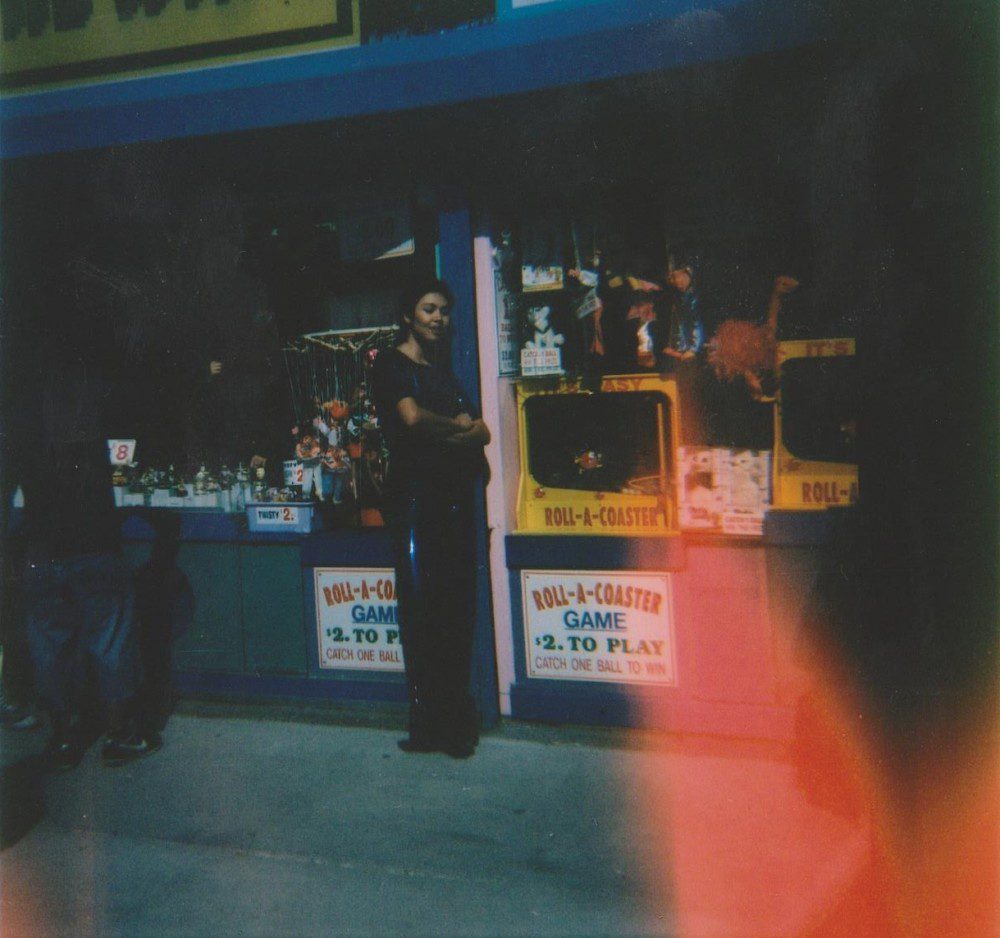
Patti’s previous workplaces, where she spent her minimum wage days: the Strand bookstore, and the art deco beauty that is the old Charles Scribner’s Sons bookstore which has since transformed into a Sephora but still boasts the watermark on the side of the building as well as the gorgeous black and gold engravings. I visited the Metropolitan Museum of Art – finding more solace behind the building, where I took a nap on the grass and the fallen pale pink petals of the magnolia trees, than I did inside with the hustle of students and teachers – though frequent trips to the bathroom, located through the collection of ancient Egyptian mummies, had a way of reminding me of life. I visited the Museum of Modern Art where I felt something for Duchamp’s alter ego Rrose Sélavy. I visited the NYC Public Library and spent the rest of my American money on a beer in Bryant Park where I read Rimbaud’s letters and wrote some of my own. I visited Electric Lady Studio, where Patti first met Jimi Hendrix when she was still an unknown poetess, both feeling socially awkward at its opening celebration. I visited the Chelsea Hotel, walking inside to see the foyer that Patti sat, wrote, and drew in, where Salvador Dalí christened her his gothic crow. The concierge eyed me hard, probably knowing my business would not end in any financial transaction.
Ay Rimbaud, the rat poet laureate. A rat is all I have been, scurrying through the streets of the city of brotherly love.
I am where you were & I feel as if I could find you waiting.
Shadowing Patti’s ascent, I am where you were, is that first light of creation; culture is no longer a shield when one finds the doorways to communion. The deficit I encountered in my post-collegiate days now appears to me as a necessary gaze inward. This gaze, in its present moment, appeared in hues of escapism, a thin skin distant from something much more insidious: that of nihilism. The abrasion of punk is twofold – it is destruction, and it is creation. It is the blank generation, it is the void sublimated; it is absolute freedom, it is that nutrient which offers illumination, it is filling (fill me! fill me!).
Patti Smith offered an entrance, opening a world that I wanted to live in, reflecting light, colour, and sound that welcomed me into its foreign arms. I stayed in New York City a week, waking early enough on my seventh day to see the sun rise and with it, the last licks of night life, still with whiskey in hand. To touch heightened myth – with our fingertips! – is a brush with the artist’s divinity.
On the bus home I returned to playing “Horses” on repeat, the beginning and the end: Jesus died for somebody’s sins, but not mine.


